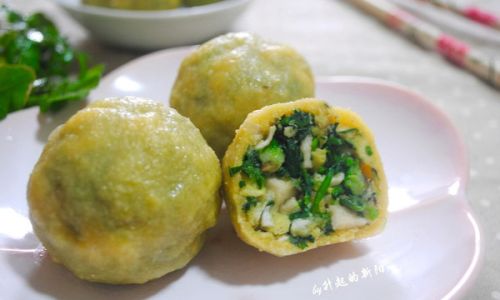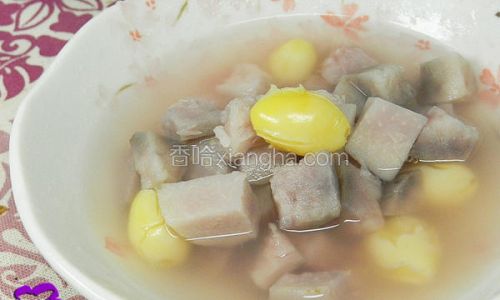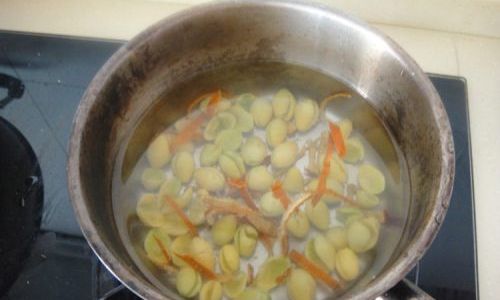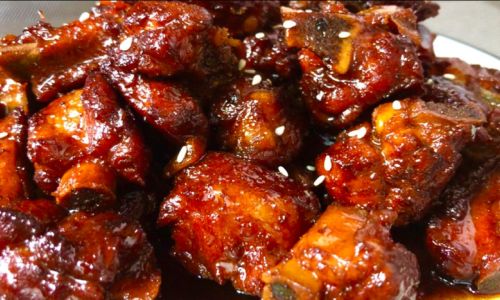Caituanzi, a beloved dish in Northern Chinese cuisine, offers a hearty blend of simplicity and flavor. These steamed or pan-fried buns, filled with a medley of seasoned vegetables and sometimes tofu, are celebrated for their rustic charm and nutritional value. Made primarily from cornmeal or coarse grain flour, Caituanzi embodies the essence of home-cooked comfort, often enjoyed as a breakfast staple, snack, or light meal. This article delves into the art of preparing Caituanzi from scratch, ensuring even novice cooks can master this traditional recipe.
Ingredients: Assembling the Building Blocks
For the Dough
- 2 cups (240g) coarse cornmeal (yellow or white)
- 1 cup (120g) all-purpose flour (optional, for softer texture)
- 1 tsp salt
- 1 cup (240ml) boiling water
- ½ cup (120ml) lukewarm water
- 1 tbsp vegetable oil (for kneading)
For the Filling
- 3 cups (300g) shredded Chinese cabbage (or Napa cabbage)
- 1 cup (100g) grated carrots
- ½ cup (50g) chopped wood ear mushrooms (rehydrated)
- ½ cup (60g) crumbled firm tofu (optional)
- 2 green onions, finely sliced
- 2 garlic cloves, minced
- 1 tbsp fresh ginger, grated
- 1 tbsp soy sauce
- 1 tsp sesame oil
- 1 tsp white pepper
- 1 tsp salt (adjust to taste)
- 1 tbsp vegetable oil (for stir-frying)
Crafting the Dough: A Balance of Texture
The dough forms the foundation of Caituanzi, requiring a delicate interplay between cornmeal’s earthy graininess and the tenderness from all-purpose flour. Begin by combining the cornmeal, all-purpose flour (if using), and salt in a large mixing bowl. Gradually pour in the boiling water, stirring with a wooden spoon to create a coarse, crumbly mixture. This step partially cooks the cornmeal, enhancing its pliability.

Next, add the lukewarm water incrementally, kneading the dough until it forms a cohesive mass. The goal is a soft, slightly sticky dough that holds its shape. If the mixture feels too dry, sprinkle additional water; if overly wet, dust with cornmeal. Transfer the dough to a lightly oiled surface and knead for 5–7 minutes, or until smooth and elastic. Cover with a damp cloth and let it rest for 20–30 minutes. This resting period allows the gluten (if using all-purpose flour) to relax, making the dough easier to shape.
Preparing the Filling: A Symphony of Flavors
The filling’s success hinges on balancing fresh vegetables with aromatic seasonings. Start by salting the shredded cabbage: sprinkle 1 tsp salt over the cabbage, toss gently, and let it sit for 10 minutes. This draws out excess moisture, preventing soggy buns. Squeeze the cabbage dry using a cheesecloth or clean kitchen towel.
Heat 1 tbsp vegetable oil in a pan over medium heat. Sauté the garlic and ginger until fragrant, then add the carrots and mushrooms. Stir-fry for 2–3 minutes until tender. Incorporate the cabbage, tofu (if using), green onions, soy sauce, sesame oil, white pepper, and a pinch of salt. Cook for another 2 minutes, then remove from heat and let the mixture cool completely. Taste and adjust seasoning as needed—the filling should be savory with a hint of ginger’s warmth.

Assembling Caituanzi: Precision Meets Creativity
Divide the dough into 12–14 equal portions, each roughly the size of a golf ball. Roll each portion into a smooth ball, then flatten into a 4-inch disc using a rolling pin. Aim for a thin center and slightly thicker edges to prevent tearing during stuffing.
Place 1–2 tbsp of filling in the center of each disc. To seal, gather the edges of the dough and pinch them together, twisting slightly to secure. Ensure there are no gaps, as steam escaping during cooking can cause the buns to split. Flatten the sealed buns gently with your palm to create a thick, disc-like shape.
Cooking Methods: Steaming vs. Pan-Frying
Steaming (Classic Method)
Line a bamboo steamer or metal steamer basket with parchment paper or cabbage leaves to prevent sticking. Arrange the buns 1 inch apart, cover, and steam over medium heat for 15–18 minutes. The cornmeal’s coarse texture softens slightly, yielding a moist, tender interior.

Pan-Frying (Crispy Variation)
For a golden, crunchy base, heat 2 tbsp vegetable oil in a non-stick skillet. Place the buns flat-side down and cook over medium heat for 3–4 minutes until the bottoms turn golden brown. Reduce heat, add ¼ cup water, and cover immediately. Steam for 8–10 minutes until the dough is cooked through. Remove the lid and cook until the water evaporates, leaving a crispy crust.
Tips for Perfect Caituanzi: Mastering the Craft
- Dough Consistency: If using only cornmeal, the texture will be denser. For a lighter bun, substitute half the cornmeal with all-purpose flour.
- Filling Moisture: Overly wet filling leads to soggy buns. Always drain excess liquid from vegetables before mixing.
- Sealing Technique: Wet the edges of the dough slightly with water to ensure a tight seal.
- Storage: Cooked Caituanzi freezes well for up to 3 months. Reheat by steaming or microwaving with a damp paper towel.
Serving Suggestions: Elevating the Experience
Caituanzi shines when paired with dipping sauces that complement its earthy flavors. Try a mixture of soy sauce, rice vinegar, chili oil, and minced garlic. For a creamier option, blend sesame paste with a splash of water, soy sauce, and a pinch of sugar.
These buns also pair wonderfully with a bowl of congee (rice porridge) or a side of pickled vegetables. Their versatility makes them ideal for picnics, lunches, or as part of a multi-course family meal.

Cultural Significance: More Than Just a Dish
Caituanzi’s roots trace back to Northern China’s agrarian history, where resourceful cooks transformed humble ingredients into nourishing meals. Today, it remains a symbol of frugality and creativity, cherished across generations. Whether enjoyed in a bustling Beijing night market or a cozy home kitchen, Caituanzi embodies the warmth of shared traditions.
Conclusion: A Culinary Journey Completed
Mastering Caituanzi is a rewarding endeavor that bridges culinary heritage with modern creativity. By balancing the cornmeal’s rustic texture with vibrant, aromatic fillings, you create a dish that delights the senses and nourishes the soul. Experiment with seasonal vegetables or spices to make it your own—each iteration tells a story of adaptation and innovation. So roll up your sleeves, embrace the process, and savor the fruits of your labor. After all, the best Caituanzi is one made with care, patience, and a dash of culinary curiosity.






0 comments